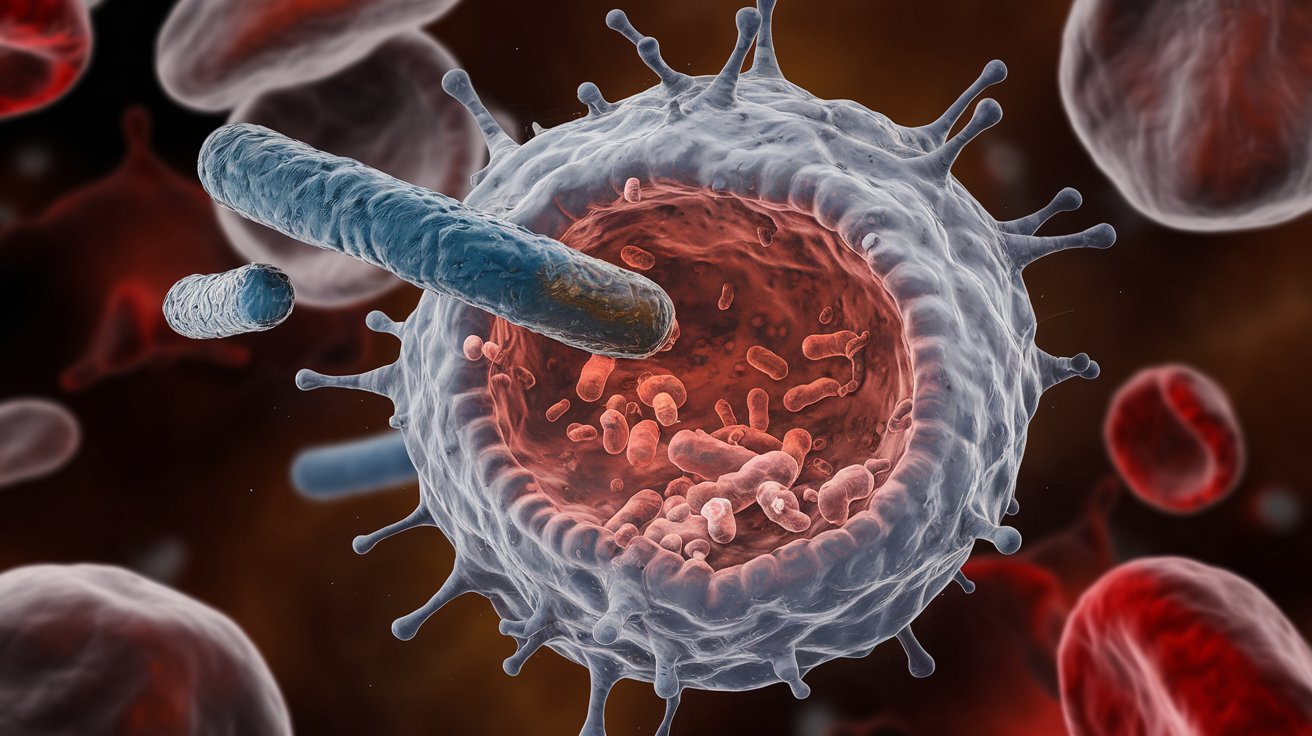
What is Nlrp12-Associated Disease? Nlrp12-Associated Disease is a rare genetic disorder linked to mutations in the NLRP12 gene. This gene plays a role in the body's immune response. When it doesn't work properly, it can lead to issues like periodic fever syndromes and autoinflammatory conditions. Symptoms might include recurring fevers, joint pain, skin rashes, and abdominal pain. These symptoms can vary widely among individuals, making diagnosis tricky. Understanding this condition is crucial for managing symptoms and improving quality of life. Researchers continue to study Nlrp12 to uncover more about its functions and potential treatments. If you or someone you know experiences unexplained fevers or inflammation, consulting a healthcare professional familiar with genetic disorders could be beneficial. Early diagnosis can lead to better management strategies, helping those affected lead healthier lives.
Key Takeaways:
- Nlrp12-associated disease is a rare genetic condition causing inflammation-related symptoms like fever, joint pain, and skin rashes. Genetic testing and ongoing research are crucial for diagnosis and treatment.
- Environmental factors, lifestyle changes, and genetic counseling play a role in managing Nlrp12-associated disease. Future research aims to explore gene therapy and biomarker identification for better treatment options.
Understanding Nlrp12-Associated Disease
Nlrp12-associated disease is a rare genetic condition linked to mutations in the NLRP12 gene. This gene plays a crucial role in regulating inflammation in the body. When it malfunctions, it can lead to a variety of health issues. Let's explore some intriguing facts about this condition.
-
Genetic Roots
Nlrp12-associated disease is inherited in an autosomal dominant pattern. This means only one copy of the altered gene is needed to cause the disorder. -
Inflammation Regulation
The NLRP12 gene is part of the NLR family, which helps control inflammation. Mutations can disrupt this balance, leading to excessive inflammation. -
Periodic Fever Syndrome
One of the main symptoms is periodic fever syndrome, where individuals experience recurrent episodes of fever without an infection. -
Joint Pain and Swelling
Patients often suffer from joint pain and swelling, similar to arthritis, due to inflammation. -
Skin Rashes
Skin rashes are common, appearing as red, inflamed patches that can be itchy or painful. -
Hearing Loss
Some individuals with Nlrp12-associated disease experience sensorineural hearing loss, which affects the inner ear. -
Diagnosis Challenges
Diagnosing this disease can be difficult due to its rarity and overlapping symptoms with other conditions. -
Genetic Testing
Genetic testing is crucial for confirming a diagnosis, as it can identify mutations in the NLRP12 gene. -
Treatment Options
There is no cure, but treatments focus on managing symptoms, often using anti-inflammatory medications. -
Research and Development
Ongoing research aims to better understand the disease and develop targeted therapies.
Symptoms and Impact
The symptoms of Nlrp12-associated disease can vary widely, affecting different parts of the body. Understanding these symptoms helps in managing the condition effectively.
-
Fatigue
Chronic fatigue is a common complaint, impacting daily life and activities. -
Abdominal Pain
Some patients experience abdominal pain, which can be severe and debilitating. -
Eye Inflammation
Inflammation can also affect the eyes, leading to conditions like uveitis. -
Variable Severity
The severity of symptoms can vary greatly, even among family members with the same genetic mutation. -
Impact on Quality of Life
The disease can significantly impact quality of life, requiring ongoing medical care and lifestyle adjustments.
Genetic and Environmental Factors
While genetics play a major role in Nlrp12-associated disease, environmental factors can also influence its expression and severity.
-
Environmental Triggers
Certain environmental factors, like stress or infections, can trigger or worsen symptoms. -
Lifestyle Modifications
Lifestyle changes, such as a balanced diet and regular exercise, can help manage symptoms. -
Family History
A family history of the disease increases the likelihood of inheriting the condition. -
Genetic Counseling
Genetic counseling is recommended for affected families to understand inheritance patterns and risks. -
Research on Environmental Impact
Research is ongoing to determine how environmental factors interact with genetic predispositions.
Future Directions in Research
The scientific community continues to explore new avenues to better understand and treat Nlrp12-associated disease.
-
Gene Therapy Potential
Gene therapy holds promise as a future treatment option, aiming to correct the underlying genetic mutation. -
Biomarker Identification
Identifying biomarkers could lead to earlier diagnosis and more personalized treatment plans. -
International Collaboration
Researchers worldwide are collaborating to share data and insights, accelerating progress. -
Patient Registries
Patient registries help track symptoms and treatment outcomes, providing valuable data for research. -
Awareness and Advocacy
Raising awareness about this rare disease is crucial for securing funding and support for research initiatives.
Final Thoughts on Nlrp12-Associated Disease
Nlrp12-Associated Disease, though rare, holds significant importance in understanding genetic disorders. This condition, linked to mutations in the NLRP12 gene, can lead to autoinflammatory symptoms like fever, joint pain, and skin rashes. Recognizing these symptoms early can make a big difference in managing the disease effectively.
Research continues to uncover more about this disease, offering hope for better treatments and possibly a cure. Genetic testing plays a crucial role in diagnosing Nlrp12-Associated Disease, helping patients receive the right care.
For those affected, connecting with support groups and staying informed about the latest research can be empowering. Awareness and education are key in tackling this condition, ensuring those affected receive the support they need. As science advances, the future looks promising for those living with Nlrp12-Associated Disease.
Frequently Asked Questions
Was this page helpful?
Our commitment to delivering trustworthy and engaging content is at the heart of what we do. Each fact on our site is contributed by real users like you, bringing a wealth of diverse insights and information. To ensure the highest standards of accuracy and reliability, our dedicated editors meticulously review each submission. This process guarantees that the facts we share are not only fascinating but also credible. Trust in our commitment to quality and authenticity as you explore and learn with us.
